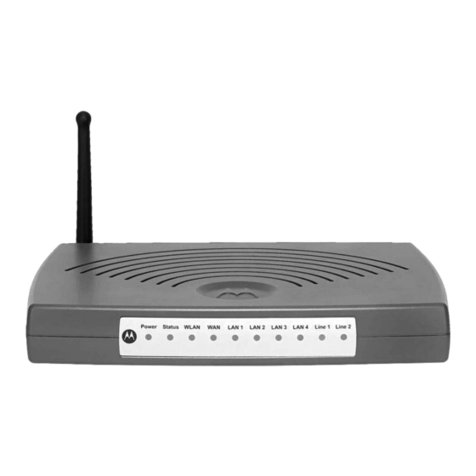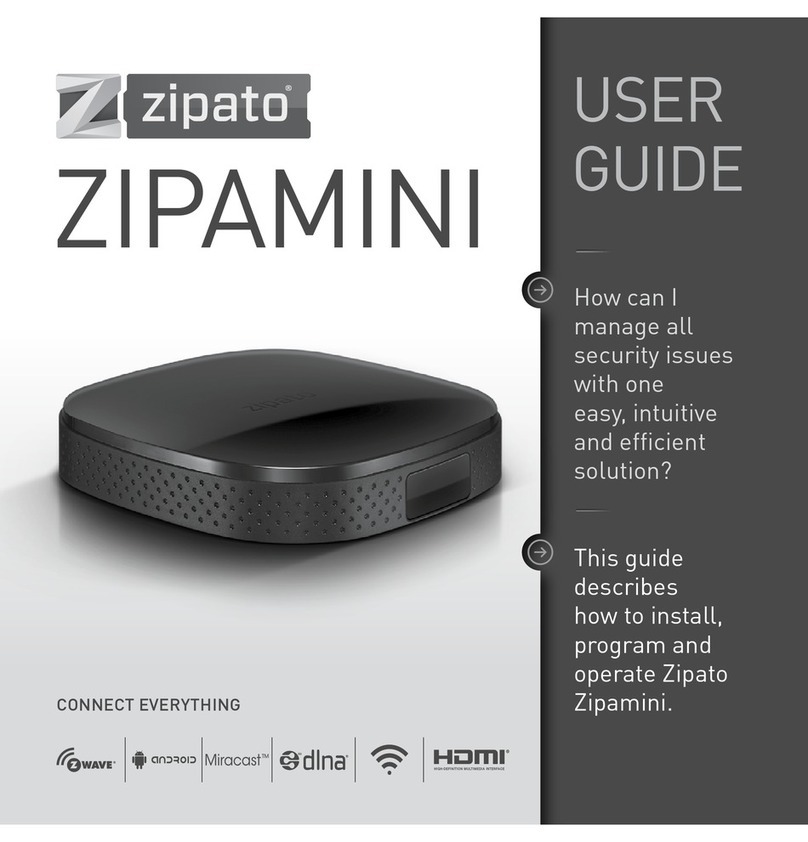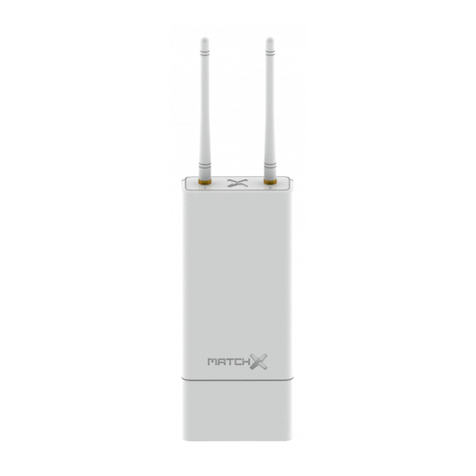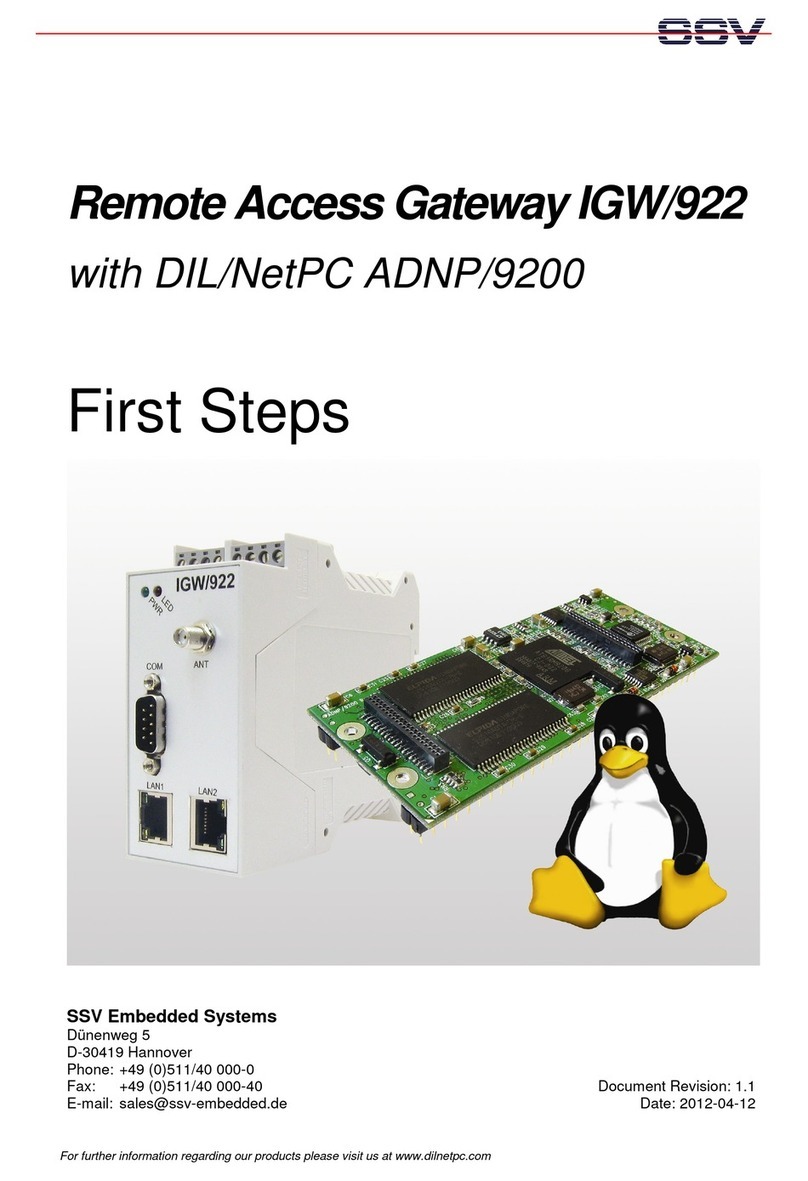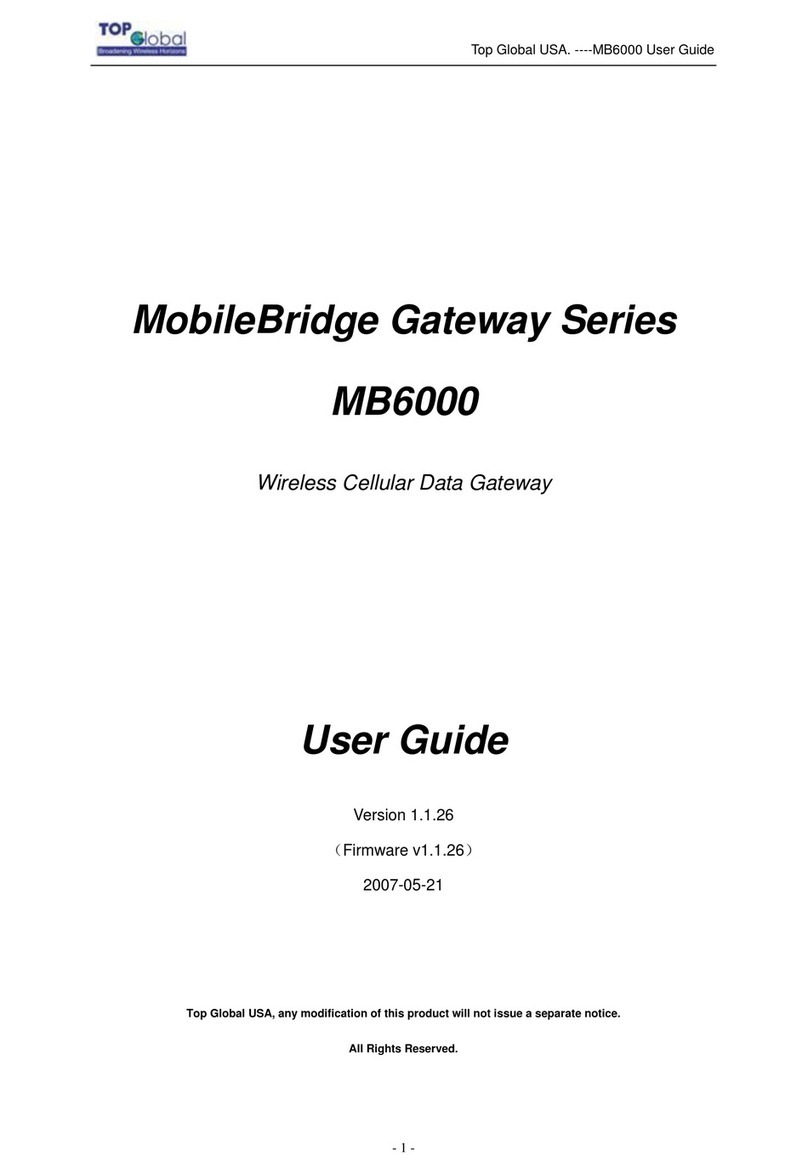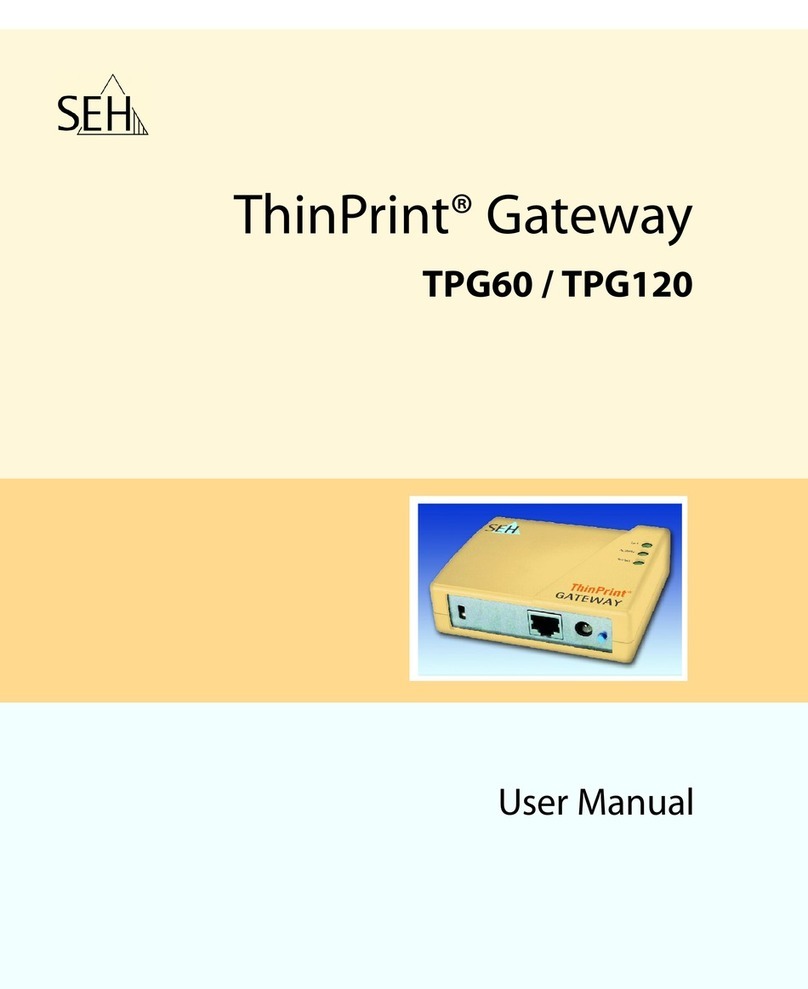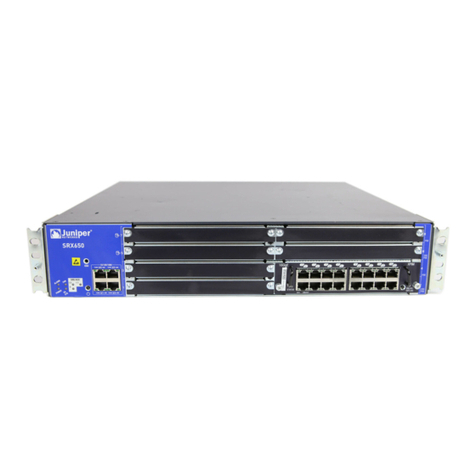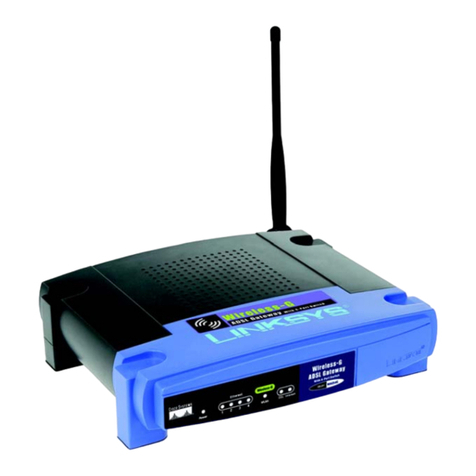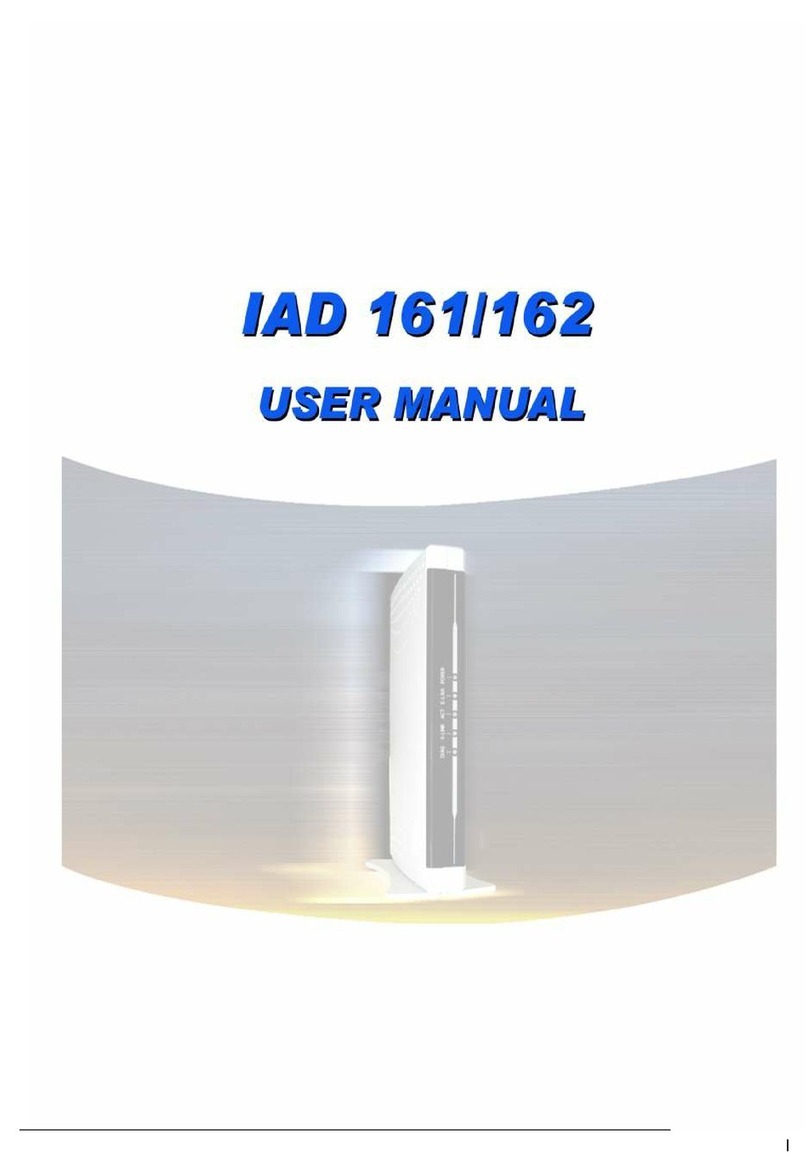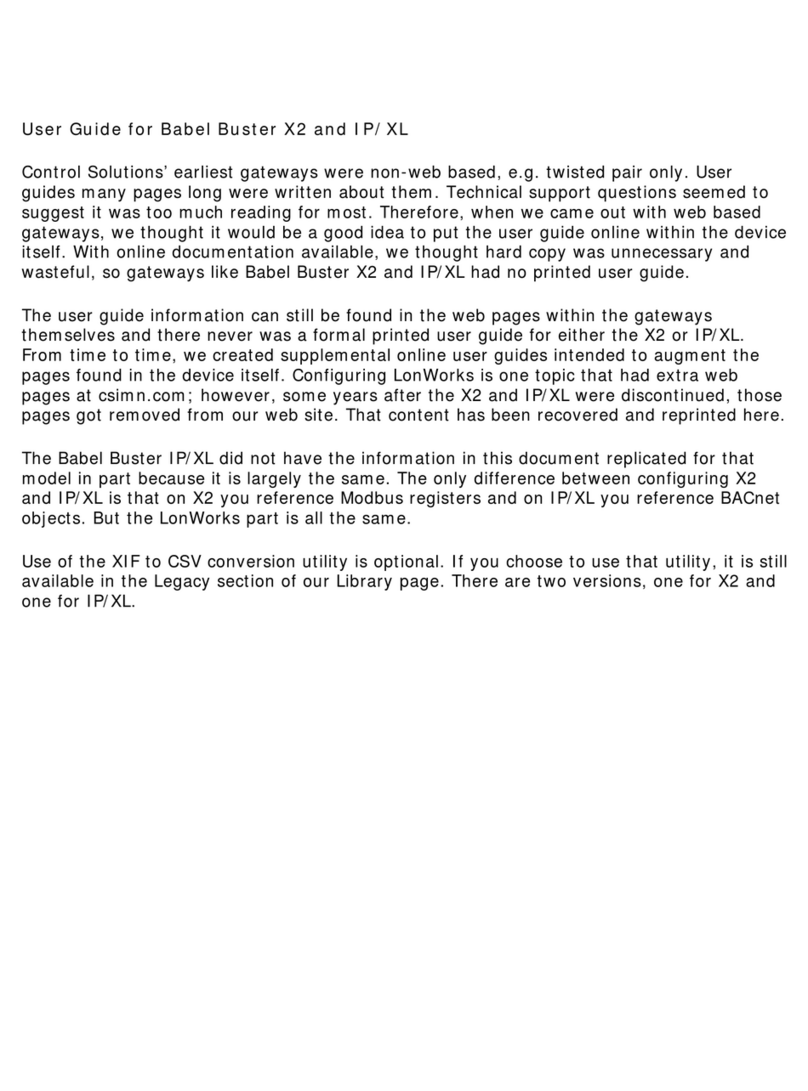ELAUSYS EVO-KNX User manual

User Manual
Doc.Ref : EVO-KNX-UM
EVO-KNX –Paradox KNX Interface
Revision : 2.01
Page : 1 of 23
© ELAUSYS SPRL
This document cannot be reproduced fully or partially without written authorization
.
KNX Interface
for Paradox alarm system
User Manual
Document history
Version.
Date
Author
Comment
1.00
14-AUG-2017
NDE
First issue
2.00
08-FEB-2018
NDE
Update firmware to standard Elausys “Alarm System
Gateway V2.00” ETS Application
2.01
20-MAR-2018
NDE
Add details on configuration of the PRT3 interface
ELAUSYS
EVO-KNX

User Manual
Doc.Ref : EVO-KNX-UM
EVO-KNX –Paradox KNX Interface
Revision : 2.01
Page : 2 of 23
© ELAUSYS SPRL
This document cannot be reproduced fully or partially without written authorization
TABLE OF CONTENT
1. INTRODUCTION 3
2. OVERVIEW 4
2.1 .......USAGE &LIMITATION ................................................................................................4
2.1 .......SOFTWARE.................................................................................................................4
2.2 .......CONNECTION DIAGRAM ...........................................................................................5
2.3 .......CONFIGURING THE PRT3 INTERFACE ....................................................................5
3. PARAMETERS 9
3.1 .......GENERAL SETTINGS.................................................................................................9
3.2 .......PGM ...........................................................................................................................11
3.3 .......ZONE .........................................................................................................................11
3.1 .......VIRTUAL INPUT ........................................................................................................11
3.2 .......AREA..........................................................................................................................12
4. COMMUNICATION OBJECTS 13
4.1 .......GENERAL..................................................................................................................13
4.2 .......POWER SUPPLY.......................................................................................................13
4.3 .......PGM...........................................................................................................................13
4.4 .......ZONE .........................................................................................................................14
4.5 .......VIRTUAL INPUT ........................................................................................................14
4.6 .......AREA..........................................................................................................................14
4.7 .......GROUP OBJECT LIST...............................................................................................16
5. CONFIGURATION 18
5.1 .......PHYSICAL DEVICE ...................................................................................................18
5.2 .......PARAMETERS ..........................................................................................................18
5.3 .......GROUP OBJECTS.....................................................................................................20
6. FIRMWARE VERSION 23
7. DATASHEET 23

User Manual
Doc.Ref : EVO-KNX-UM
EVO-KNX –Paradox KNX Interface
Revision : 2.01
Page : 3 of 23
© ELAUSYS SPRL
This document cannot be reproduced fully or partially without written authorization
1. INTRODUCTION
The KNX interface module EVO-KNX is a KNX gateway for the Paradox EVO alarm systems. It enables
bidirectional communication with the alarm system using the RS232 communication module (PRT3)
from Paradox.
It allows integrators to take advantage of a fully integrated alarm system including KNX scenarios,
automatic lighting using the motion detectors, arming or monitoring the system using a KNX
visualization.
Main features:
•KNX Interface for Paradox EVO alarm systems
•Up to 30 PGM status
•Up to 96 zone status
•Control up to 16 virtual inputs
•Control up to 4 areas (arm/partial/disarm)
•9 status per area (alarm, entry, exit, fire,…)
•Recall of KNX scenes for each status
•Battery and AC Failure monitoring
•Galvanic insulation from the KNX bus
By default, zone status is configured for zone 1 to 96 of the alarm system. A general parameter allows
to change for zone 97 to 192. Having then the possibility to use two gateways in the same installation to
cover the 192 zones of the alarm system.
In the same way, areas are configured for areas 1 to 4 of the alarm system but a parameter allows to
change the area number to cover the areas 5 to 8 if required.

User Manual
Doc.Ref : EVO-KNX-UM
EVO-KNX –Paradox KNX Interface
Revision : 2.01
Page : 4 of 23
© ELAUSYS SPRL
This document cannot be reproduced fully or partially without written authorization
2. OVERVIEW
2.1 USAGE & LIMITATION
This interface is intended to be used with a PARADOX EVO or DGP series alarm system. The system
must be equipped with a PRT3 module for RS232 communication.
2.1 SOFTWARE
The KNX Interface is configured using the ETS tool, the free ETS Demo version can be downloaded
from the website of KNX Association. The free version allows to configure up to 5 KNX modules in a
project, the KNX gateway is only one module.

User Manual
Doc.Ref : EVO-KNX-UM
EVO-KNX –Paradox KNX Interface
Revision : 2.01
Page : 5 of 23
© ELAUSYS SPRL
This document cannot be reproduced fully or partially without written authorization
2.2 CONNECTION DIAGRAM
Elausys EVO-KNX module requires an external 12VDC power supply which can be provided by the
AUX power supply of the alarm system.
The RS232 connection between the PRT3 and the EVO-KNX interface is made using the DB9
connector provided with this module. No additional component or wiring is required. The PRT3 module
must be configured at 9600 baud.
2.3 CONFIGURING THE PRT3 INTERFACE
To enable the communication with the EVO-KNX module, the following options must be selected in the
PRT3 configuration:

User Manual
Doc.Ref : EVO-KNX-UM
EVO-KNX –Paradox KNX Interface
Revision : 2.01
Page : 6 of 23
© ELAUSYS SPRL
This document cannot be reproduced fully or partially without written authorization
In the PRT3 tab ”Options”:

User Manual
Doc.Ref : EVO-KNX-UM
EVO-KNX –Paradox KNX Interface
Revision : 2.01
Page : 7 of 23
© ELAUSYS SPRL
This document cannot be reproduced fully or partially without written authorization
In the tab “Areas and Zones”, select the areas and zones that should be enabled in the interface:

User Manual
Doc.Ref : EVO-KNX-UM
EVO-KNX –Paradox KNX Interface
Revision : 2.01
Page : 8 of 23
© ELAUSYS SPRL
This document cannot be reproduced fully or partially without written authorization
If virtual inputs and PGM need to be used, they should be enabled in the respective tabs:

User Manual
Doc.Ref : EVO-KNX-UM
EVO-KNX –Paradox KNX Interface
Revision : 2.01
Page : 9 of 23
© ELAUSYS SPRL
This document cannot be reproduced fully or partially without written authorization
3. PARAMETERS
The KNX interface parameters are defined in the “parameters” tab of the device, in the ETS project.
3.1 GENERAL SETTINGS
The following parameters are defined in the General section of the device parameters:
PARAMETER
VALUES
DESCRIPTION
Use PG Control
▪Not used (default)
▪Used
This parameter must be set to “Not
used” for the paradox EVO interface.
PG Control is not available on this
device.
Use PG Status
▪Not used (default)
▪Used
When this parameter is set to “Used”,
the PG status group objects are made
available.
Number of PG
▪16 (default)
▪32
Number of PG control and status group
objects to be used
Use Zone Status
▪Not used
▪Used (default)
When this parameter is set to “Used”,
the zone status group objects are
made available.
Number of zones
▪16 (default)
▪32
▪48
▪64
▪72
▪96
Number of zone status group objects
to be used.
Zones offset
▪0 (default)
▪96
An offset of 0 will use zones 1 to 96
from the alarm system whereas an
offset of 96 will use zones 97 to 192

User Manual
Doc.Ref : EVO-KNX-UM
EVO-KNX –Paradox KNX Interface
Revision : 2.01
Page : 10 of 23
© ELAUSYS SPRL
This document cannot be reproduced fully or partially without written authorization
Use Virtual inputs
▪Not used (default)
▪Used
When this parameter is set to “Used”,
the virtual inputs group objects are
made available.
Number of areas
▪1 (default)
▪2
▪3
▪4
Number of areas to control/monitor
from the KNX interface
Send area status
▪ON
▪OFF
▪ON/OFF (default)
Area status object can be configured to
send only the changes to ON values,
only the changes to OFF values or both
ON and OFF values
User code
Text field
(format 123456)
When using control commands from
KNX, a valid user code of up to 6 digits
is required.
This applies to area control (arm,
disarm,…)
User code lenght
4..6
Number of digits for the user code
Use Power supply status
▪Not used (default)
▪Used
When this parameter is set to “Used”,
the power supply stauts group objects
aobjects are made available.
PG and Zone startup
behavior
▪Switch OFF (default)
▪Switch ON
▪Memory
Internal status of group object after
restart. Memory will restore the state
of group objects before power lost.
Device Options
Text string
Device options are not available
on this device.

User Manual
Doc.Ref : EVO-KNX-UM
EVO-KNX –Paradox KNX Interface
Revision : 2.01
Page : 11 of 23
© ELAUSYS SPRL
This document cannot be reproduced fully or partially without written authorization
3.2 PGM
PG Status must be enabled in the general parameters to enable PGM status group objects. Depending
on the general parameter “Number of PG”, 16 or 32 PGs are listed in the group objects. The Paradox
alarm system however uses a maximum of 30 PGM.
The status of each PGM from the Paradox alarm system can be monitored by a Group object. The PGM
can be configured in the Paradox system to send status based on specific events.
3.3 ZONE
Depending the general parameter “Number of zones”, up to 96 zones are listed in the group objects.
The status of each zone from the Paradox alarm system can be monitored by a Group object.
The general parameter “Zones offset” allow to use zones 1 to 96 from the alarm system or zones 97 to
192.
3.1 VIRTUAL INPUT
When enabled in the general parameters, 16 virtual inputs are listed in the group objects.
Each virtual input can be controlled by a KNX Group object. The virtual input is configured in the
Paradox system in order to trigger specific events.
Sending a value “1” to the group object means “Zone open”, sending a value “0” means “Zone OK”.

User Manual
Doc.Ref : EVO-KNX-UM
EVO-KNX –Paradox KNX Interface
Revision : 2.01
Page : 12 of 23
© ELAUSYS SPRL
This document cannot be reproduced fully or partially without written authorization
3.2 AREA
Depending the general parameter “Number of areas”, up to 4 areas are listed in the group objects.
Each area can be controlled by using the 3 group objects: Arm, partial arm or disarm. Several statuses
are available and have a dedicated group object.
CONTROL OBJECT
VALUE ON
VALUE OFF
Arm (switch)
Arm
Disarm
Partial arm (switch)
Partial Arm
Disarm
Disarm (trigger)
Disarm
Disarm
For each area, a tab is made visible to configure the area parameters.
Areas are configured for areas 1 to 4 of the alarm system but by changing the parameter “Area
mapping” it is also possible to cover the areas 5 to 8.
A scene can be assigned to each status. This scene number will be recalled each time the zone status is
active (ON).
Leave the scene number to 0 to disable the scene control.
STATE
SCENE
Disarmed
0..64
Entry
0..64
Exit
0..64
Armed
0..64
Partial armed
0..64
Fire alarm
0..64
Siren ON (Audible alarm)
0..64
Panic alarm (Silent alarm)
0..64
Intrusion alarm
0..64

User Manual
Doc.Ref : EVO-KNX-UM
EVO-KNX –Paradox KNX Interface
Revision : 2.01
Page : 13 of 23
© ELAUSYS SPRL
This document cannot be reproduced fully or partially without written authorization
4. COMMUNICATION OBJECTS
4.1 GENERAL
General communication objects of the device.
GO
NAME
DESCRIPTION
1
Module status
Sends 0 when the module is operating
normally, sends an error code when
applicable.
2
Firmware
Sends the firmware version of the
device at s
233
Call scene
The scene number configured for each
area status are sent to KNX whenever
the area status is activated
4.2 POWER SUPPLY
GO
NAME
DESCRIPTION
163
AC Failure
Active when the main power supply of
the alarm system is down.
164
Battery Failure
Active when the battery is low
4.3 PGM
Each PGM has 1 Group Objects (GO) for the status to KNX.
GO
NAME
DESCRIPTION
2
PGx Status
PG status
This chapter details what GO are available for each PG. The same GO applies to all other PG (x = 1 to
32).

User Manual
Doc.Ref : EVO-KNX-UM
EVO-KNX –Paradox KNX Interface
Revision : 2.01
Page : 14 of 23
© ELAUSYS SPRL
This document cannot be reproduced fully or partially without written authorization
4.4 ZONE
Each ZONE has 1 Group Objects (GO) for the status to KNX.
GO
NAME
DESCRIPTION
67
Zone x Status
Zone status
This chapter details what GO are available for each ZONE. The same GO applies to all other ZONE (x =
1 to 96).
4.5 VIRTUAL INPUT
Each VIRTUAL INPUT has 1 Group Objects (GO) to be controlled from KNX.
GO
NAME
DESCRIPTION
169
Virtual Input x
Virtual input control (open / OK)
This chapter details what GO are available for each Virtual Input. The same GO applies to all other
Virtual Input (x = 1 to 16).
4.6 AREA
Each area has 12 Group Objects (GO), 3 for area control and 9 for the area status to KNX.
GO
NAME
DESCRIPTION
185
Area x - Arm
Arm the Area
186
Area x –Stay arm
Stay arm the Area
187
Area x –Disarm
Disarm the Area
188
Area x –State disarmed
Area x status
189
Area x –Entry delay
Area x status
190
Area x –Exit delay
Area x status
191
Area x –State armed
Area x status
192
Area x –State partial armed
Area x status

User Manual
Doc.Ref : EVO-KNX-UM
EVO-KNX –Paradox KNX Interface
Revision : 2.01
Page : 15 of 23
© ELAUSYS SPRL
This document cannot be reproduced fully or partially without written authorization
193
Area x –Fire alarm
Area x status
194
Area x –Siren ON
Area x status
195
Area x –Panic alarm
Area x status
196
Area x –Intrusion alarm
Area x status
This chapter details what GO are available for each AREA. The same GO applies to all other areas (x =
1 to 4).

User Manual
Doc.Ref : EVO-KNX-UM
EVO-KNX –Paradox KNX Interface
Revision : 2.01
Page : 16 of 23
© ELAUSYS SPRL
This document cannot be reproduced fully or partially without written authorization
4.7 GROUP OBJECT LIST
GO
Name
Function
Size
Flags
Type ID
Type Name
Range
Description
1
Module status
Status code
1 byte
C R - T -
20.011
DPT_ErrorClass_System
Device error code
2
Firmware
Text string
14 bytes
C R - T -
16.000
DPT_String_ASCII
Device firmware version
3
PG1
On/Off
1 bit
C - W - -
1.001
DPT_Switch
0..1
PG –On/Off (NOT USED)
4
PG1 Status
On/Off
1 bit
C R - T -
1.001
DPT_Switch
0..1
PG –On/Off status
5
PG2
On/Off
1 bit
C - W - -
1.001
DPT_Switch
0..1
PG –On/Off (NOT USED)
6
PG2 Status
On/Off
1 bit
C R - T -
1.001
DPT_Switch
0..1
PG –On/Off status
…
Same for PG3 to PG31
64
PG32
On/Off
1 bit
C - W - -
1.001
DPT_Switch
0..1
PG –On/Off (NOT USED)
66
PG32 Status
On/Off
1 bit
C R - T -
1.001
DPT_Switch
0..1
PG –On/Off status
67
Zone 1 Status
On/Off
1 bit
C R - T -
1.001
DPT_Switch
0..1
Zone –On/Off status
68
Zone 2 Status
On/Off
1 bit
C R - T -
1.001
DPT_Switch
0..1
Zone –On/Off status
…
Same for Zone 3 to 95
162
Zone 96 Status
On/Off
1 bit
C R - T -
1.001
DPT_Switch
0..1
Zone –On/Off status
163
AC Failure
On/Off
1 bit
C R - T -
1.001
DPT_Switch
0..1
On/Off status
164
Battery Failure
On/Off
1 bit
C R - T -
1.001
DPT_Switch
0..1
On/Off status
169
Virtual input 1
Open/Close
1 bit
C - W - -
1.001
DPT_Switch
0..1
Open/close input
170
Virtual input 2
Open/Close
1 bit
C - W - -
1.001
DPT_Switch
0..1
Open/close input
…
Same for input 3 to 15

User Manual
Doc.Ref : EVO-KNX-UM
EVO-KNX –Paradox KNX Interface
Revision : 2.01
Page : 17 of 23
© ELAUSYS SPRL
This document cannot be reproduced fully or partially without written authorization
GO
Name
Function
Size
Flags
Type ID
Type Name
Range
Description
184
Virtual input 16
Open/Close
1 bit
C - W - -
1.001
DPT_Switch
0..1
Open/close input
185
Area 1 - Arm
On/Off
1 bit
C - W --
1.017
DPT_Switch
0..1
Arm Area
186
Area 1 –Partial arm
On/Off
1 bit
C - W --
1.017
DPT_Switch
0..1
Partial arm Area
187
Area 1 –Disarm
On
1 bit
C - W --
1.017
DPT_Trigger
0..1
Disarm Area
188
Area 1 –state disarmed
On/Off
1 bit
C R - T -
1.001
DPT_Switch
0..1
Area state disarmed
189
Area 1 –entry delay
On/Off
1 bit
C R - T -
1.001
DPT_Switch
0..1
Area entry delay status
190
Area 1 –exit delay
On/Off
1 bit
C R - T -
1.001
DPT_Switch
0..1
Area exit delay status
191
Area 1 –state armed
On/Off
1 bit
C R - T -
1.001
DPT_Switch
0..1
Area state armed status
192
Area 1 –state partial armed
On/Off
1 bit
C R - T -
1.001
DPT_Switch
0..1
Area state partial armed status
193
Area 1 –Fire alarm
On/Off
1 bit
C R - T -
1.001
DPT_Switch
0..1
Area fire alarm
194
Area 1 –Siren ON
On/Off
1 bit
C R - T -
1.001
DPT_Switch
0..1
Area siren ON
195
Area 1 –Panic alarm
On/Off
1 bit
C R - T -
1.001
DPT_Switch
0..1
Area panic alarm
196
Area 1 –Intrusion alarm
On/Off
1 bit
C R - T -
1.001
DPT_Switch
0..1
Area intrusion alarm
…
Same for AREA 2 to 4
233
Call scene
-
1 Byte
C --T -
18.001
DPT_SceneControl
1..64
Scene control

User Manual
Doc.Ref : EVO-KNX-UM
EVO-KNX –Paradox KNX Interface
Revision : 2.01
Page : 18 of 23
© ELAUSYS SPRL
This document cannot be reproduced fully or partially without written authorization
5. CONFIGURATION
5.1 PHYSICAL DEVICE
ELAUSYS devices are configured using the ETS tool. You should first download and install the free
version of ETS tool before you continue.
The EVO-KNX Interface must be assigned a physical address on the KNX network. Assign a free
address to the module, in our example we choose 1.1.50.
5.2 PARAMETERS
Once a KNX physical address is set, open the parameter tab to configure the interface.
The parameters are grouped into sections: A general section and a section for each area configured.
In the general section, enter a valid user code from the Paradox system to enable area control.

User Manual
Doc.Ref : EVO-KNX-UM
EVO-KNX –Paradox KNX Interface
Revision : 2.01
Page : 19 of 23
© ELAUSYS SPRL
This document cannot be reproduced fully or partially without written authorization
Enable the required group objects and select the number of PG, zone and areas to be used.
Note that the Paradox system is limited to 30 PGMs and only PGM status is available (no PG control).
For each Area selected, a tab is available in the left side menu to configure the scene control.
Open the first Area parameters by selecting the section “Area 1”.
By default Area 1 is mapped to area 1 of the alarm system, by changing this value to 5 for example,
Area 1 of the KNX interface would be linked to area 5 in the alarm system.
For each status of the Area, set the scene number to be called. Leaving the scene number to 0 will
disable it.
Then repeat the same process for each Area in your project.
When GO and parameters are all configured, download the KNX Interface application to the device. The
first download requires to press the programming button on the device to set the device in KNX
programming mode then perform a full download.

User Manual
Doc.Ref : EVO-KNX-UM
EVO-KNX –Paradox KNX Interface
Revision : 2.01
Page : 20 of 23
© ELAUSYS SPRL
This document cannot be reproduced fully or partially without written authorization
5.3 GROUP OBJECTS
A group address (GA) must be assigned to each group object (GO) needed by the application.
Open the Group Objects tab of the device and assign a GA to the object scene, PGM, zones, virtual
inputs and areas as needed.
Example for Area 1:
Table of contents
Popular Gateway manuals by other brands
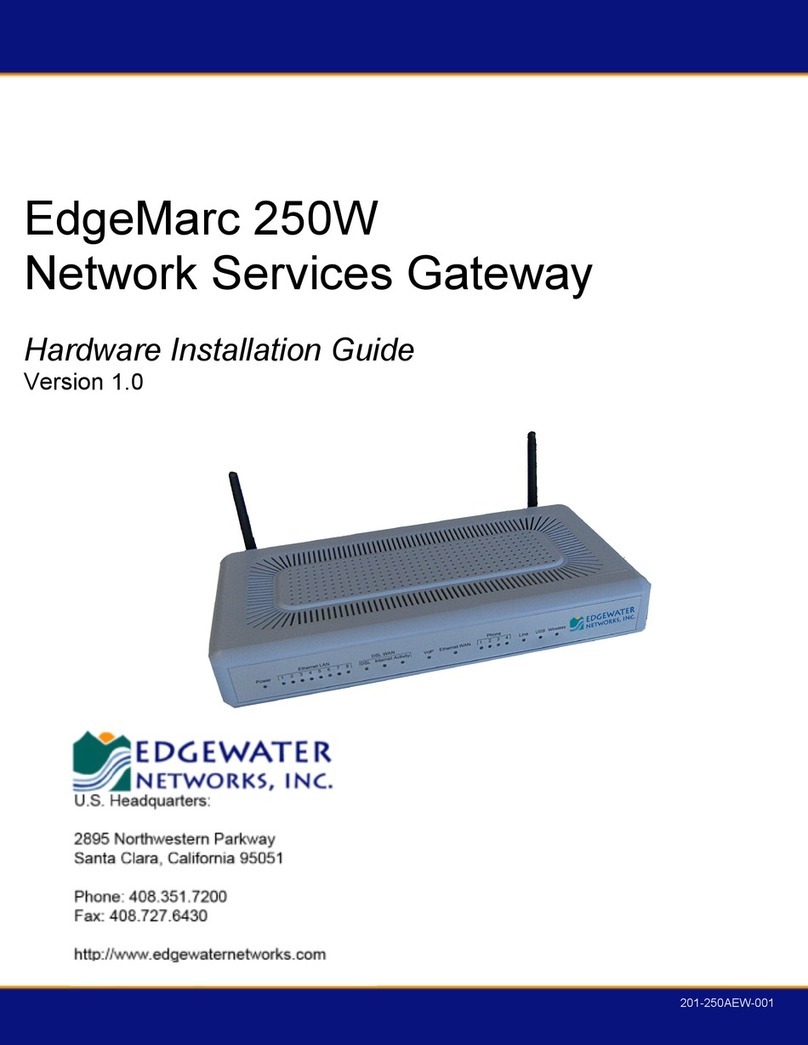
Edgewater Networks
Edgewater Networks EdgeMarc 250W Hardware installation guide
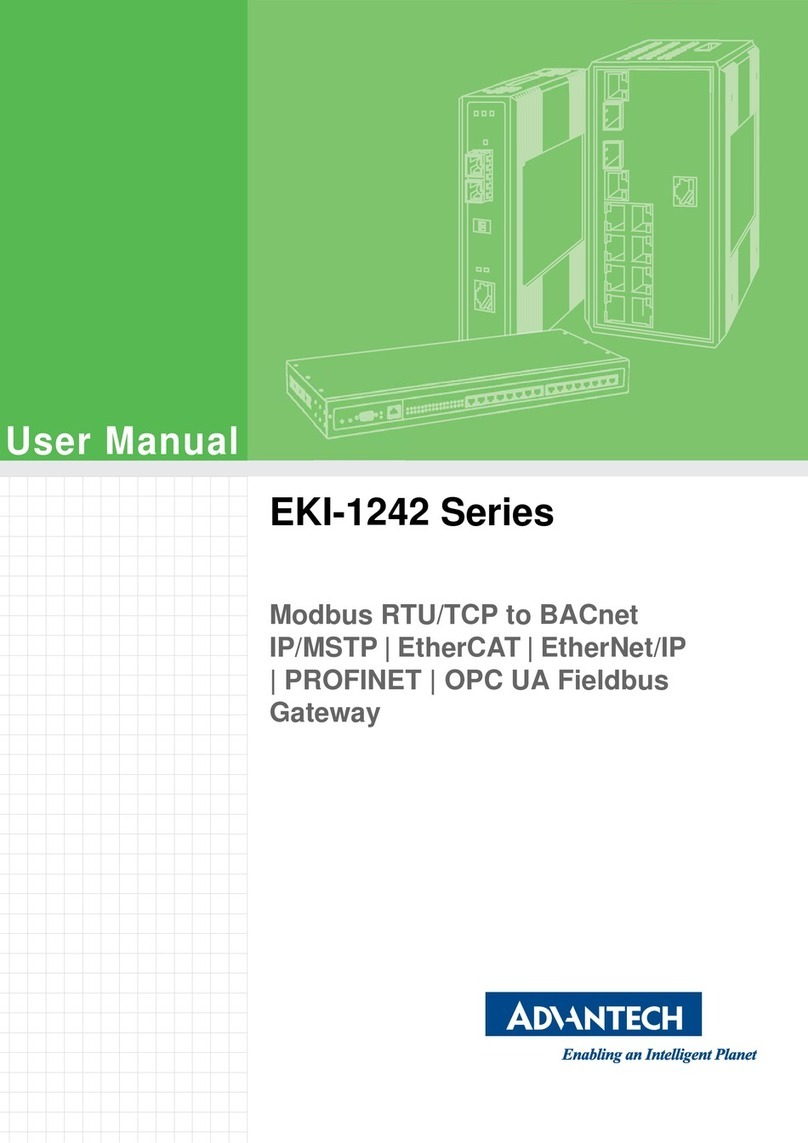
Advantech
Advantech EKI-1242OUMS user manual
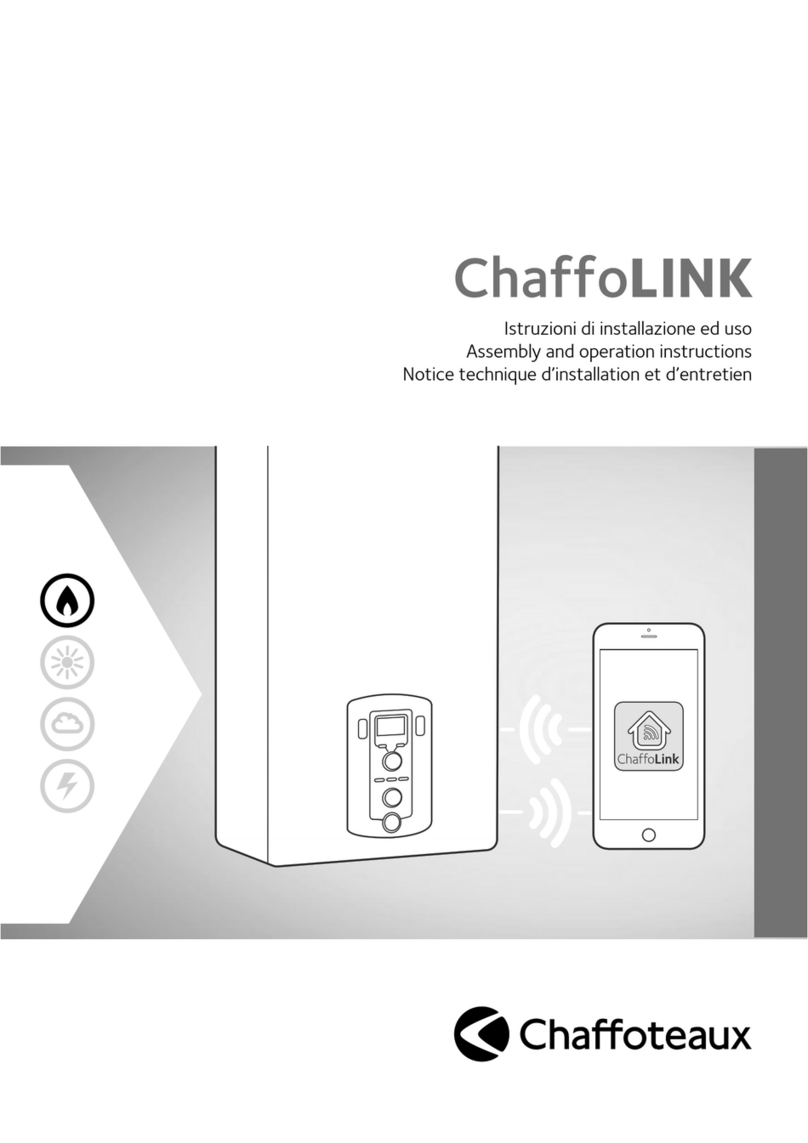
CHAFFOTEAUX
CHAFFOTEAUX ChaffoLINK Assembly and operation instructions
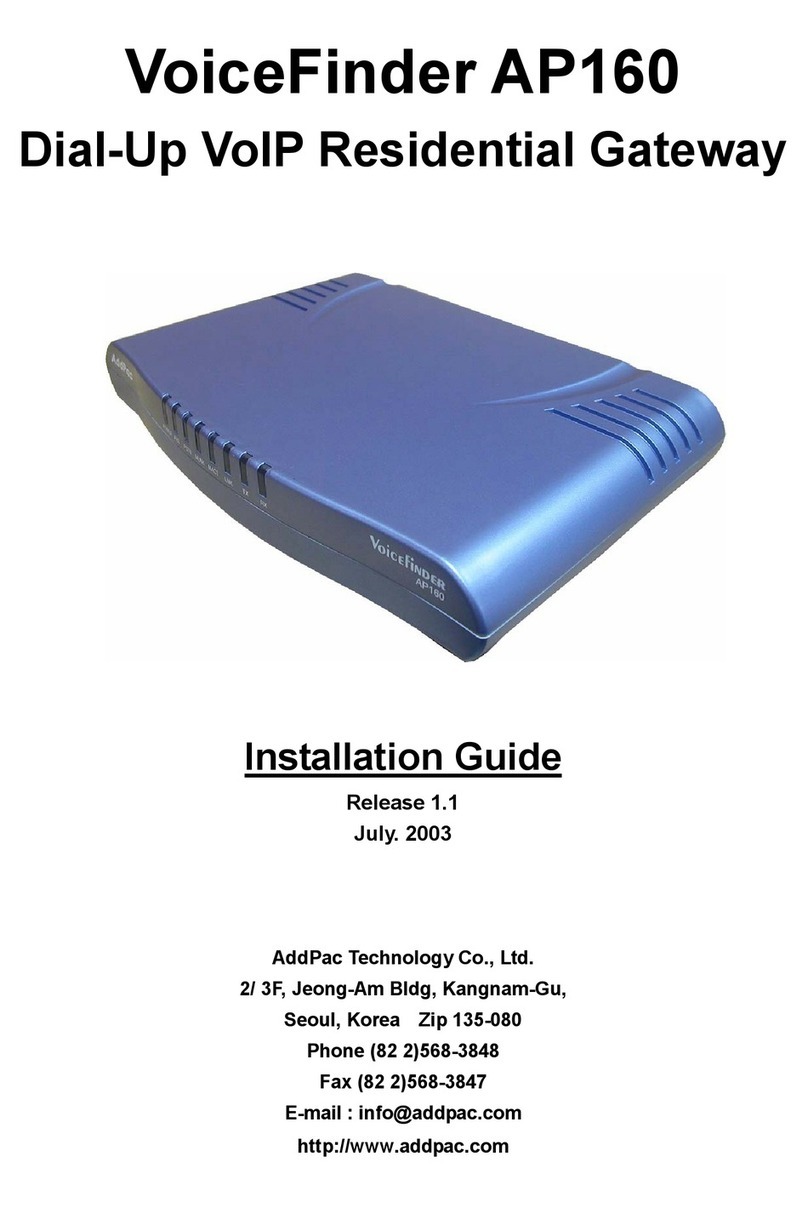
AddPac
AddPac VoiceFinder AP 160 installation guide
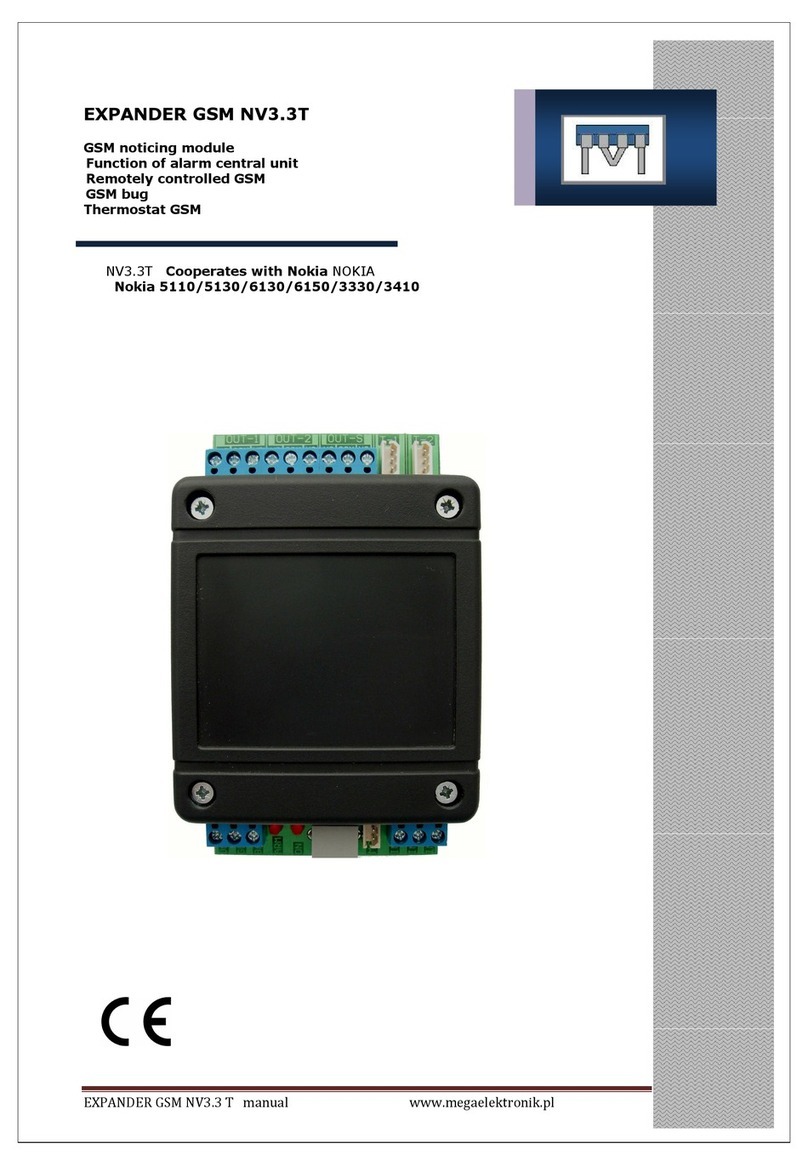
Mega Electronics
Mega Electronics EXPANDER GSM NV3.3T manual

Zte
Zte ZXHN H298Q user manual

